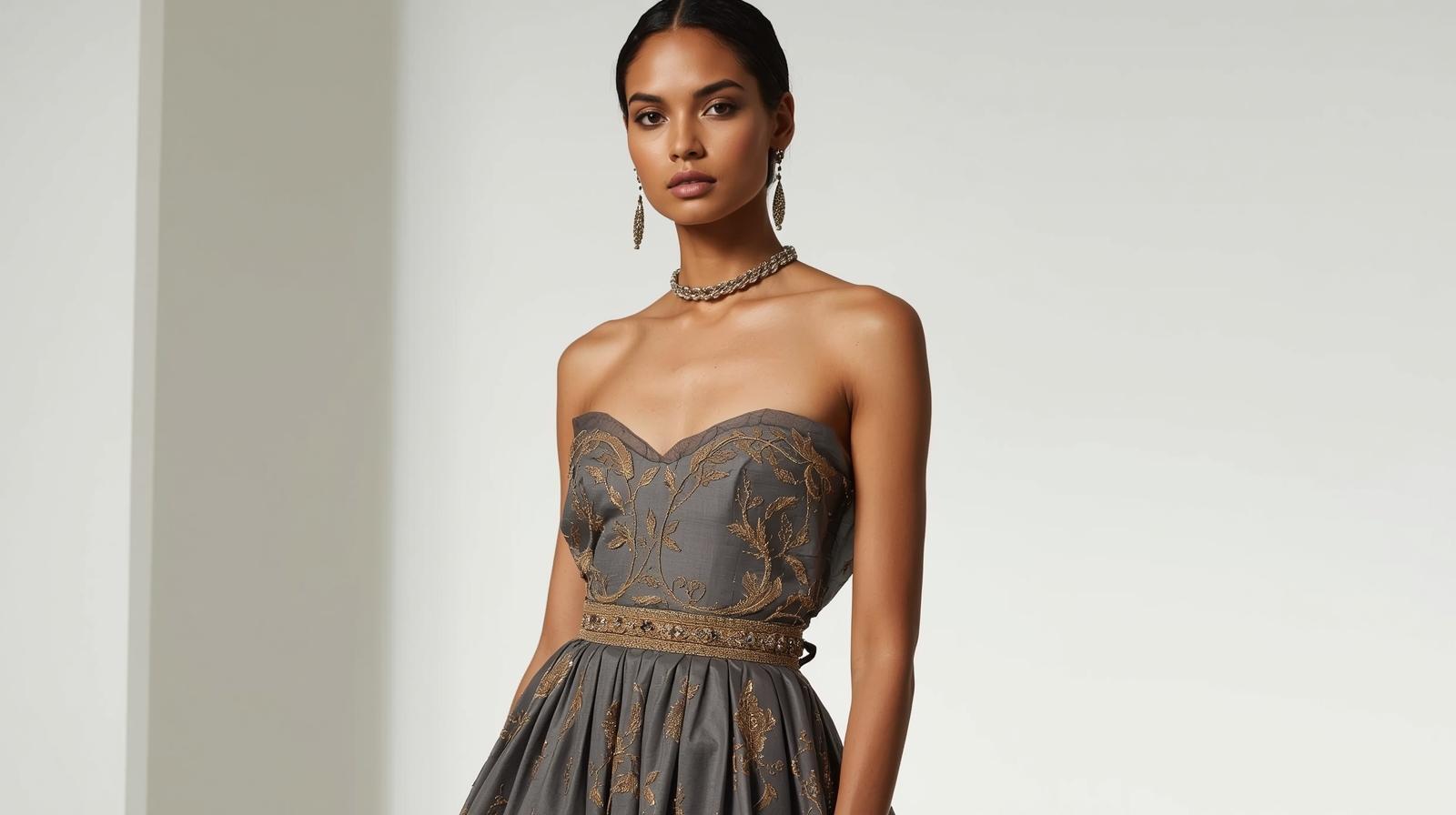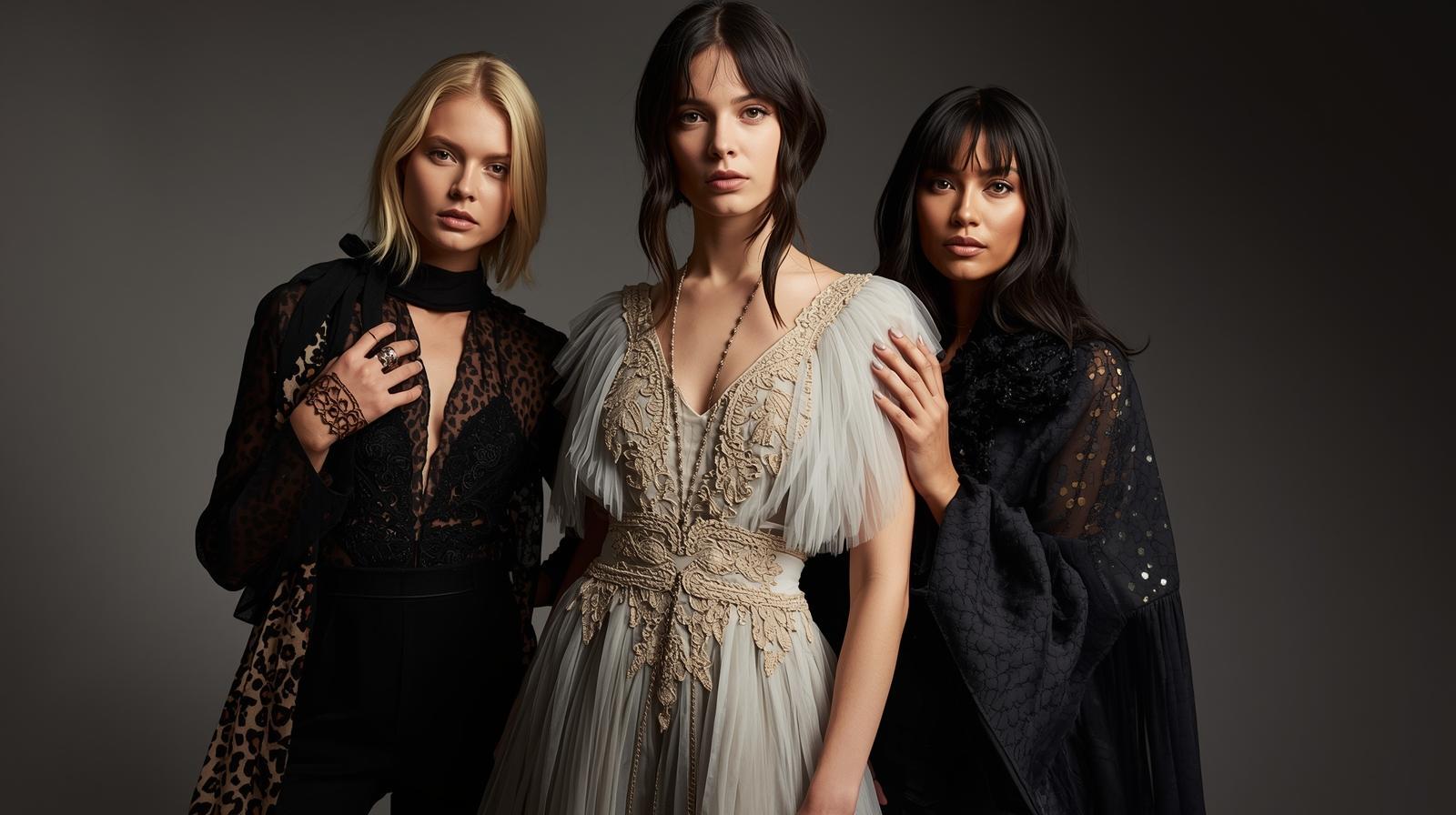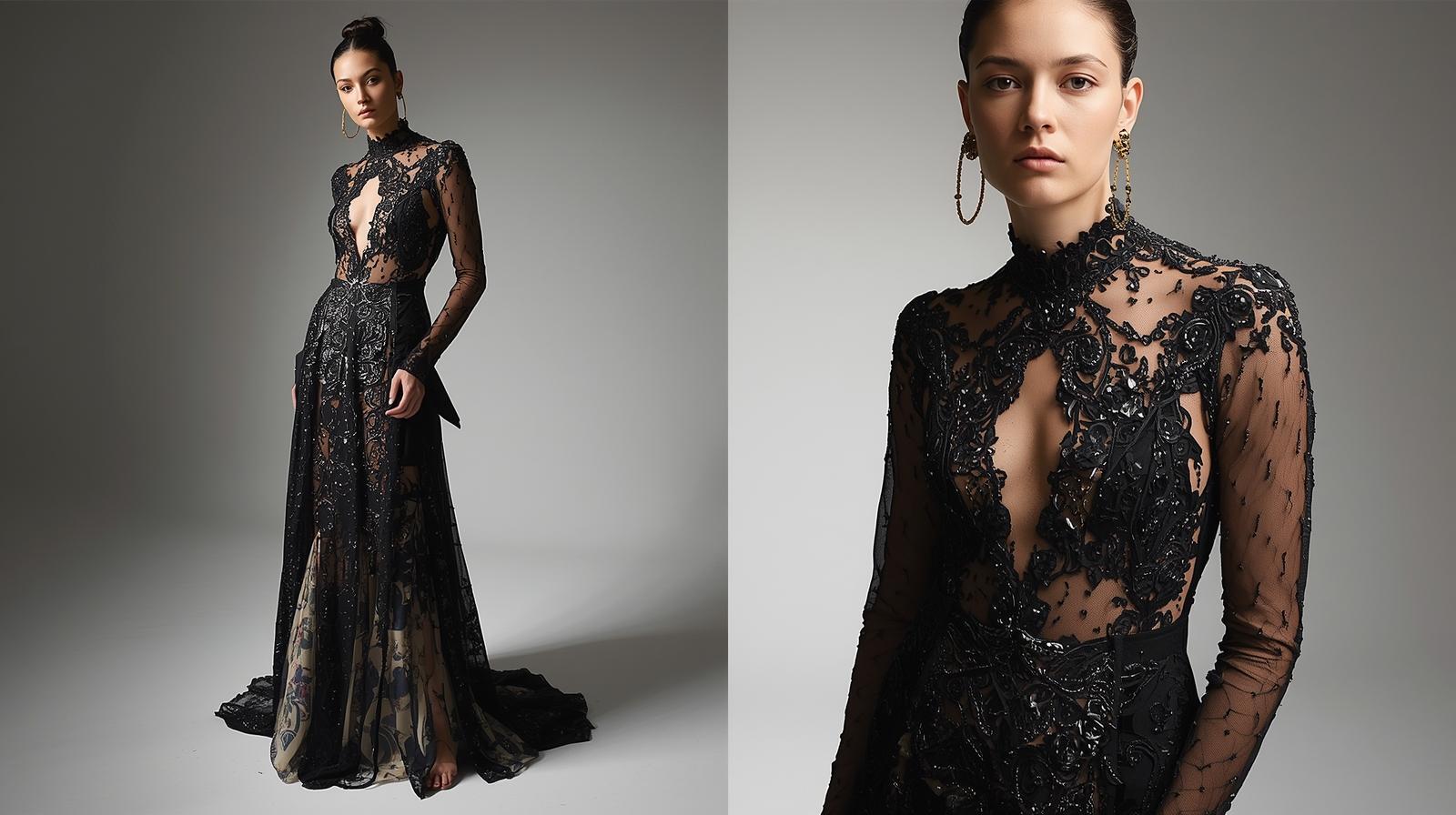30th Oct 2025
Sustainable Luxury - Upcycled Evening Wear Takes Center Stage

You will discover how upcycled evening wear is transforming the fashion industry into a realm of eco-conscious elegance. By embracing this trend, you not only enhance your wardrobe with unique and sophisticated pieces but also contribute to a more sustainable future. As the demand for sustainable luxury grows, you can play a vital role in reducing fashion waste while making bold style statements. Explore the dynamic world of upcycled evening wear and see how it elevates your fashion choices responsibly.
The Evolution of Sustainable Fashion
Historical Context
The roots of sustainable fashion stretch back to the 1960s when counterculture movements began to challenge consumerism. Pioneers like Katharine Hamnett introduced the concept of ethical clothing, emphasizing fair labor practices. Throughout the '80s and '90s, awareness grew amid rising environmental concerns, leading to early initiatives like the Eco-Label in Europe. This foundation paved the way for today's more sophisticated sustainable practices, as you can see in the shift towards eco-friendly materials and transparent supply chains.
Current Trends
Today, sustainable fashion embraces innovative materials, from organic cotton to recycled plastics, responding to the desire for environmentally responsible choices. Brands like Stella McCartney exemplify this shift, using upcycled fabrics while focusing on ethical manufacturing processes. Additionally, rental services and second-hand shopping have surged, reflecting a greater societal commitment to reducing waste. You might also notice an increase in digital fashion, which challenges traditional norms by permitting you to ‘wear’ designs virtually without consuming physical resources.
The surge in sustainable fashion is characterized by notable collaborations that blend luxury and eco-friendliness, such as Gucci's partnership with the Ellen MacArthur Foundation. You witness more brands adopting circular economy principles, promoting the recycling and reusing of materials to extend garment life. The rise of transparency is redefining luxury, with consumers increasingly demanding information about sourcing and production. This shift is not just a trend; it represents a systemic change that aligns fashion with broader social and environmental responsibility.
Understanding Upcycling
Definition and Process
Upcycling is the process of transforming discarded materials into new products of higher value or quality. It involves creativity and resourcefulness, as you take items that would typically end up in landfills, like old garments or textiles, and reimagine them into stunning evening wear. This practice not only breathes new life into materials but also contributes to a more sustainable fashion industry by reducing waste and resource consumption.
Benefits of Upcycling in Fashion
Choosing upcycled fashion offers numerous advantages, from environmental sustainability to unique personal style. By opting for upcycled evening wear, you help reduce the demand for new raw materials, which in turn minimizes the fashion industry's environmental impact. Additionally, you gain exclusive pieces that are often one-of-a-kind, showcasing craftsmanship and creativity, setting you apart in a world of mass-produced clothing.
Upcycling in fashion also significantly reduces your carbon footprint. The production of new garments consumes vast amounts of water and contributes to greenhouse gas emissions. In contrast, creating upcycled pieces typically requires less energy and resources. Furthermore, the trend promotes a circular economy, encouraging brands and consumers to value sustainability over fast fashion. Brands like Reformation and Stella McCartney emphasize upcycled materials, demonstrating that beautiful, high-quality evening wear can be both stylish and sustainable.

The Role of Designers in Upcycled Evening Wear
Your vision as a designer forms the backbone of the upcycled evening wear movement. By reimagining discarded fabrics, you not only create striking garments but also address the environmental crisis in fashion. With each piece, you champion sustainability, demonstrating that luxury and eco-consciousness can coexist. The future lies in your innovative designs that inspire consumers to embrace responsible choices without sacrificing style.
Innovative Techniques
Exploring innovative techniques allows you to push the boundaries of traditional fashion. Techniques like patchwork, deconstruction, and laser cutting offer fresh perspectives on using pre-existing materials creatively. These methods not only enhance the aesthetic appeal but also minimize waste, enabling you to craft unique pieces that tell a story while promoting sustainability.
Case Studies of Leading Designers
Several leading designers have paved the way in the upcycled evening wear arena, illustrating the potential of creativity combined with sustainability. These case studies provide evidence of how you can effectively merge high fashion with eco-conscious practices.
- Maison Margiela: The 'Artisanal' collection features pieces crafted from over 90% % upcycled materials, resulting in a 60% reduction in waste.
- Stella McCartney: Known for using upcycled textiles, her 2021 collection represented a 70% decrease in carbon emissions compared to traditional manufacturing.
- Reformation: The brand converts 20 million bottles into garments annually, showcasing a successful integration of sustainability in luxury fashion.
- Christopher Raeburn: His use of surplus military fabrics in upcycled evening wear has saved over 30,000 garments from landfill.
These designers exemplify the shift towards sustainability in luxury fashion. For instance, Maison Margiela's commitment to upcycling has reduced waste significantly, while Stella McCartney's practices cut down carbon emissions by implementing responsible sourcing. Reformation's model proves that economic viability aligns with environmental responsibility, and Christopher Raeburn illustrates how creativity can repurpose materials effectively. Such case studies demonstrate that upcycled evening wear is not only feasible but also necessary for a sustainable future in fashion.
Consumer Perspectives
Shifting Attitudes Towards Luxury
Your perception of luxury is evolving. Modern consumers increasingly prioritize sustainability, opting for brands that reflect their ethical values. Traditional notions of exclusivity are being transformed, with a focus on authenticity and responsibility. More than just a status symbol, luxury now encompasses a modern identity that resonates with your own lifestyle choices.
The Demand for Ethical Fashion
Your desire for ethical fashion is driving a significant shift in the industry. You seek brands that prioritize eco-friendliness, fair labor practices, and sustainable sourcing, creating a ripple effect across the market. In fact, a recent survey indicated that 66% of consumers are willing to pay more for sustainable products, reflecting a broader trend towards responsible consumerism.
The demand for ethical fashion signifies a major shift in your purchasing behavior, with increasing numbers of you choosing brands based on their environmental and social impact. Innovative designers are now crafting beautiful garments from upcycled materials, allowing you to enjoy unique evening wear without compromising your values. Brands like Reformation and E.L.V. Denim exemplify this trend, producing stunning pieces that are both stylish and sustainable. By opting for these choices, you not only make a fashion statement but also contribute to a more sustainable future in the industry.
Challenges in the Upcycled Luxury Market
While upcycled luxury holds great promise, it faces significant challenges that impede its growth. You encounter issues related to sourcing materials, market perception, and production scalability, all of which affect the viability of upcycled evening wear in the luxury fashion space.
Sourcing Materials
Sourcing materials for upcycled luxury fashion can be complex and time-consuming. You must identify high-quality discarded textiles, which are often scattered across various locations. Additionally, negotiating with suppliers and ensuring consistent quality adds layers of difficulty, particularly when aiming for a cohesive collection.
Market Perception
Market perception can hinder the acceptance of upcycled luxury fashion among consumers. You might find that traditional views on luxury equate it with new materials, leaving upcycled collections struggling to gain respect in the high-end market.
The resistance often stems from the belief that luxury must always present as brand new and flawless. You may notice that many potential buyers associate upcycled items with lower quality or second-hand stigma. However, luxury brands like Stella McCartney and Reformation have started to change this narrative by crafting stunning upcycled pieces that highlight their creativity and sustainability. Increased consumer education and brand storytelling are crucial in reshaping perceptions, encouraging you to embrace upcycled luxury as a viable, chic alternative.
Future of Upcycled Evening Wear
As sustainability takes a firm hold in the luxury market, the future of upcycled evening wear looks promising. You can expect an increased emphasis on innovative designs that merge art with eco-consciousness, translating sustainability into high-end fashion statements that redefine elegance. As brands focus on storytelling through their garments, the luxury of upcycled materials will become synonymous with exclusivity and individuality.
Predictions for the Industry
Industry analysts forecast that the demand for upcycled evening wear will surge, with projections indicating a potential market growth rate of over 12% annually by 2025. You should be prepared to see collaborations between luxury designers and sustainable brands, resulting in unique collections that appeal to both your aesthetic desires and ethical values.

The Impact of Technology
Technology is revolutionizing upcycled evening wear by enhancing design capabilities and streamlining production processes. You’ll witness advancements in 3D printing and AI-driven design tools, which will allow designers to create intricate fashions from reclaimed materials more efficiently. This not only minimizes waste but also speeds up the design cycle, ensuring that you'll have access to the latest trends without the environmental footprint.
The integration of technology in upcycled evening wear is transforming how designers source materials and conceptualize garments. With tools like AI algorithms that can predict consumer preferences and sustainability metrics software, brands can optimize their resources effectively. This means you can wear garments that not only embody cutting-edge fashion but are also produced with a significantly reduced environmental impact. As more brands adopt these technologies, you’ll have the opportunity to choose from an array of high-fashion options that reflect both style and sustainability.
Final Words
Conclusively, as you explore sustainable luxury, upcycled evening wear stands out as a testament to innovation and responsibility. Your choices in fashion can reflect an appreciation for artistry while advocating for environmental stewardship. By embracing these unique garments, you not only enhance your wardrobe but also contribute to a movement aimed at reducing waste and promoting ethical practices in the industry. Ultimately, your commitment to sustainable luxury shapes a brighter future for fashion.

